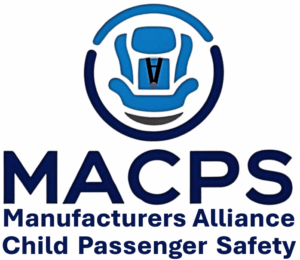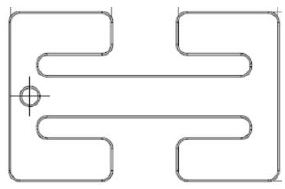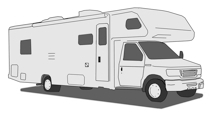
Are Child Restraints that Meet the New (Updated) Regulations Better?
All child restraints are certified to the federal regulations on the date they are manufactured. Updated regulations may or may not prompt physical changes to a specific child restraint and/or updates in the instruction manual or on labels. Additionally, our products are updated regularly as we implement learnings from crash testing and research activities. The goal is, of course, continual improvement. This is the primary reason why expiration dates are an important feature of child restraints, so that eventually older designs can be phased out of the market and consumers can benefit from current technology. For child restraints without an expiration date, it is important to comply with any required maintenance checks for these same reasons. Ultimately, the data indicates that a properly used child restraint reduces the risk of death or serious injury in all types of crashes. The best child restraint is the one that fits your child, fits your vehicle and is used properly on every ride.
(January 2025)
Locking Clips
If allowed by the child restraint manufacturer, a metal locking clip is an acceptable pre-crash positioning device to hold the lap portion of a lap-shoulder seat belt, at a fixed length for child restraint installation. The locking clip must be of the standard metal design (see reference below) and is acceptable when obtained from any child restraint manufacturer.
(July 2024, reaffirmed January 2025)

Expiration Dates
The MACPS encourages adherence to expiration dates, as stated by each child restraint manufacturer for its child restraints. Expiration dates are provided for some, or all, of the following reasons:
- Because exposure of components to many environmental factors including food, drinks, dirt and debris, cleaners and other contaminants may cause degradation of the seat’s effectiveness.
- Because parts of the seat may be lost, installed incorrectly or damaged from potential wear and tear.
- Because instructions or labels may not be available or no longer be legible.
- Because instructions for use may have been updated or enhanced but may not be relevant for older models of the product.
- Because enhancements in technology, design, testing, materials and manufacturing may provide better protection for the child through improvements to performance, increased ease-of-use, convenience and comfort.
The benefits of expiration dates include:
- Phasing out older seats to ensure that as many of the child restraints in circulation as possible benefit from new advancements in safety and technology and incorporate the latest regulatory requirements.
- Discouraging secondhand child restraint use and helping to move recalled products out of circulation.
For child restraints without an expiration date, it is important to comply with any required maintenance checks.
(January 2015, revised January 2025)
Accessories / Non-Approved Products
Never use accessories that are not specifically approved by your child restraint and/or vehicle manufacturer. The safety and performance of your child restraint and/or the vehicle may be diminished by the use of accessories that are not specifically recommended by the child restraint and/or vehicle manufacturer for use with your child restraint or vehicle.
(November 2013, revised January 2025)
Recline Angle Indicators
Recline indicators on child restraints are set by the individual manufacturer based on protection of the child and performance of the child restraint in crash testing. If a recline indicator is present on a child restraint it should always be followed. If there is a compatibility issue with the recline indicator, the specific child restraint manufacturer should be contacted. Never go against the recline indicator without written permission from the child restraint manufacturer.
(November 2012, revised January 2025)
Switchable Retractor and Belt-Positioning Boosters
If the booster seat manufacturer and vehicle manufacturer both permit, the MACPS does not prohibit using the vehicle retractor in the locked mode with a belt-positioning booster. Federal Motor Vehicle Safety Standard No. 213 test setup uses a “locked” belt for certification testing. Please refer to the instructions of each manufacturer prior to switching the retractor to the locked mode.
(February 2021, reaffirmed January 2025)
Child Restraints Gate-Checked or Checked as Luggage

MACPS encourages all caregivers to secure children in their own child restraints correctly installed and used on their own airline seat. Caregivers have the option to check with a gate agent to see if there are any adjacent vacant seats to secure a child restraint in the case where an airline seat has not been pre-purchased for the child. To check for Federal Aviation Administration (FAA) Certification, please locate the label that has the verbiage: “This Restraint is Certified for Use in Motor Vehicles and Aircraft.”
Child restraints are designed to withstand most motor vehicle crash forces. In general, the MACPS does not consider a gate- checked child restraint or a child restraint that is checked as luggage to be one that has experienced forces equivalent to a motor vehicle crash. Once the destination is reached, it is recommended to inspect the child restraint to make sure no visual damage has occurred and all aspects of the child restraint function properly.
(August 2012, reaffirmed January 2025)
Children in Bulky Coats
A harness should not be secured over a bulky coat. Best practice is to first remove the coat, then secure your child, and cover the child with the coat.
- Wearing bulky coats may provide enough room for your child to wiggle loose.
- In a crash, bulky coat material will compress under the harness load, possibly allowing your child to be ejected.
- Child restraints are designed and tested for use without bulky coats. A bulky coat may alter the ability of the child restraint to perform as intended and not protect your child.
(August 2019, reaffirmed January 2025)
Child Restraints and Recreational Vehicles (RVs)

Child restraints are designed for the Federal Motor Vehicle Safety Standard No. 213 bench and motor vehicle seats meeting the Federal Motor Vehicle Safety Standard definitions of ‘passenger car’ and ‘multipurpose passenger vehicle’. A ‘recreational vehicle’ or ‘RV’ is neither. Federal Motor Vehicle Safety Standard No. 208 – Occupant Crash Protection Standard, in the section that is specific to recreational vehicles, states that rear designated seats in motor homes are excluded from the rear lap/shoulder belt requirements. While RVs may meet some Federal Motor Vehicle Safety Standards, they are only required to comply with seat belt standards for the front passengers, but not for any rear occupants that may be traveling in a Class A, B, or C recreational vehicle. Though these rear occupant seat belts are usually bolted to the floor, the biggest concern is that the wooden seat structure on which the passenger is sitting will fail and cause injury in a crash. NHTSA does not currently crash test RVs with adult or child occupants. For these reasons, it is not recommended to rely on child restraints to protect children while traveling in recreational vehicles.
MACPS recommendation is to choose a non-motorized tow-able RV, so that children can be restrained properly in the passenger vehicle that is towing the RV. If using a drivable RV instead of a towable one, have an adult drive a second car in which the children can ride so they can be restrained properly. Contact your child’s child restraint manufacturer and your RV manufacturer directly for more information.
(August 2016, revised January 2025)
Child Restraint Use with Pretensioners
Unless the child restraint manufacturer instructions state differently, using a safety belt with a pretensioner is allowed, if allowed by the vehicle manufacturer.
(September 2010, revised January 2025)
Child Restraints in Alternative Vehicles (Golf Carts, Side-by-Sides, ATVs, etc.)
Child restraints are designed for Federal Motor Vehicle Safety Standard No. 213 bench and motor vehicle seats meeting Federal Motor Vehicle Safety Standard definitions of “passenger car” and “multipurpose passenger vehicle.” While alternative vehicles may meet some Federal Motor Vehicle Safety Standards; they are not the same standards as passenger cars or multipurpose passenger vehicles and therefore may not perform as designed when used in those vehicle types. It is not recommended to rely on child restraints to protect children while travelling in these alternative vehicles. Most child restraint manufacturers prohibit the use of child restraints in alternative vehicles. Refer to the individual child restraint manufacturer for more information.
(March 2011, revised January 2025)
Over-tightening of Seat Belts When Installing Child Restraints
Over-tightening a safety belt could damage the belt path of a child restraint and/or its lock-off. Child restraints should be installed according to the manufacturer’s instructions. Proper tightness should be confirmed by grasping the child restraint with one hand at or near the belt path and pulling on the child restraint. There should be no more than one inch of side-to side or front-to-back movement at the belt path. It is not necessary to add tightening devices or use the vehicle seat back to gain a mechanical advantage.
(September 2010, revised January 2025)
